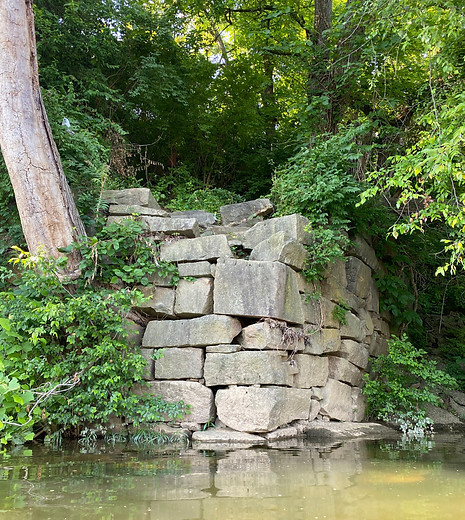
Training to obtain level II certification through the Dry Stone Walling Association
hardscaping
What is Dry Laid Stonework?
Dry-laid stonework is an ancient construction technique involving the careful placement of natural stone without the use of mortar. The stones are kept in place by gravity and frictional resistance. These structures can last hundreds or even thousands of years.
The most common dry laid structures are old farm walls, but modern landscapers are using this technique to create patios, staircases, and other outdoor features. They can greatly enhance a home's natural beauty while minimizing future maintenance that plague mortar-bound structures. Since each stone is able to shift, wall segments don't crack after prolonged foundation settlement. This also allows water to drain through the wall, making them a great option for retaining walls.
With the availability of mass produced concrete and mortar in the 1900s, dry laid stonework has become less popular. Although patios and walls built with these newer materials are cheaper and less labor intensive, they tend to require more maintenance later on. However, dry laid stonework is making a comeback. A powerful feeling is invoked upon seeing a dry laid structure; each stacked stone contributes to its form and function, and it has remained standing without human intervention for a long long time.
Top: George Washington's Arch. Work on a canal and lock system
connecting Richmond to the Ohio River began in 1785. Washington ate lunch
here right under this arch in 1791
Right: Confederate War Dead Pyramid at Hollywood Cemetery, 1868
Bottom: Mayo Island Retaining Wall on the James River. It's unknown when these were
created, but the Mayo bridge to the left of the wall was constructed in 1911. They've survived even after being completely submerged in 1972 flooding.
Where do I come into all of this? I recently obtained my Dry Stone Walling Association level 1 certification as well as my Virginia Class C Contractors License earlier this year. I've spent a couple years building paver patios and precast concrete walls in Richmond Virginia, honing my skills as a contractor and building a solid base of happy clients.
Now I'm starting to make my move into becoming solely a dry waller. I'm moving back to Vermont this summer and I'm mainly focusing on buying a house (pray for me) and training to pass my level II DSWA test.
Read on to see some pros/cons of dry laid stonework and some examples of mortar-bound wall failures. Check out my work gallery for some sample work.
Examples of mortared wall failures found on a single day of driving through Richmond's West End




Pros
Rustic and natural appearance
Allows easy drainage
Increases home value, little depreciation
Recyclable (easily dismantled)
Less maintenance and risk of failure
Long lasting
Cons
More labor intensive
Difficulty building taller freestanding walls






